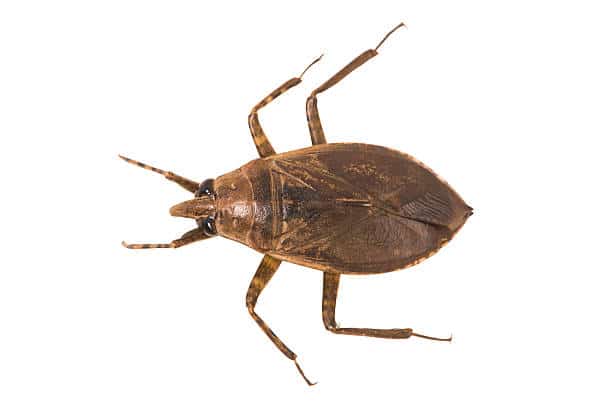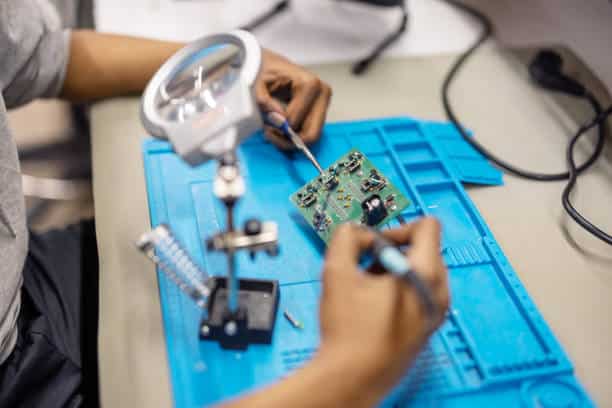Waterbug infestations can be completely frustrating! This piece focuses on how to get rid of waterbugs with simple solutions. From preventive measures to targeted interventions, empower yourself with the knowledge to create a bug-free environment and regain control of your living spaces.
Table of contents
What Are Waterbugs?
Waterbugs, often misunderstood, are a type of large aquatic insect that can be found in various environments. They belong to the order Hemiptera and are commonly mistaken for cockroaches due to their similar appearance. These insects thrive in damp conditions, and their presence can be particularly noticeable in areas with water sources.
Causes Of Waterbugs?
Waterbugs are attracted to environments that offer ideal conditions for their survival. Common causes of waterbug infestations include:
1. Dampness: Excess moisture in and around your home creates a welcoming habitat for waterbugs. Leaks, standing water, or high humidity levels can contribute to their presence.
2. Food Sources: Waterbugs are scavengers and feed on various organic matter. Leaving food crumbs, spills, or improperly stored food can attract them to your living spaces.
3. Warmth: Many waterbug species thrive in warm temperatures. In colder seasons, they may seek refuge indoors, making homes with a consistent warm environment more susceptible to infestations.
4. Water Sources: As the name suggests, waterbugs are often associated with water. Bodies of water near your home, leaky pipes, or even pet water bowls can attract and sustain these insects.
How To Get Rid Of Waterbugs?
To effectively get rid of waterbugs, consider these pest control strategies:
- Remove Standing Water: Eliminate sources of standing water around your home, such as leaks, puddles, or clogged drains, to deprive waterbugs of their preferred habitat.
- Seal Entry Points: Identify and seal any cracks or openings in walls, windows, and doors. This helps prevent waterbugs from entering your home in the first place.
- Clean Thoroughly: Regularly clean and sanitize your living spaces, paying special attention to the kitchen and areas where food is prepared. Remove crumbs, spills, and any potential food sources that may attract waterbugs.
- Reduce Humidity: Use dehumidifiers to control indoor humidity levels, making your home less appealing to waterbugs. Proper ventilation can also help in moisture reduction.
- Natural Repellents: Consider using natural repellents like citrus oils, bay leaves, or cucumber slices. These can act as deterrents without harmful chemicals.
- Chemical Treatments: In severe cases, insecticides or pesticides may be necessary. Consult with a pest control professional to choose the appropriate and safe products for your situation.
Home DIY Strategies For Waterbugs
Here are some DIY strategies you can implement at home to tackle waterbug infestations:
- Boric Acid: Sprinkle boric acid in areas where waterbugs are present. This substance is effective in eliminating bugs while being relatively safe for humans and pets.
- Diatomaceous Earth: Spread food-grade diatomaceous earth in areas prone to waterbug activity. It works by dehydrating insects and is considered safe for home use.
- Essential Oils: Create a natural repellent using essential oils like peppermint, citronella, or tea tree oil. Mix a few drops with water and spray around entry points and infested areas.
- Soap and Water Solution: Mix a solution of soapy water and spray it directly on waterbugs. This can immobilize and eventually eliminate them.
- Cucumber Slices: Place cucumber slices in areas where waterbugs are prevalent. The scent may act as a deterrent.
- Catnip: Catnip contains a natural insect repellent called nepetalactone. Planting catnip around your home or using catnip sachets can help keep waterbugs at bay.
- Caulk and Seal: Seal gaps and cracks with caulk to prevent waterbugs from entering. Focus on areas around windows, doors, and pipes.
Frequently Asked Questions
Waterbugs can enter homes through cracks, openings, and gaps. To prevent their entry, seal potential entry points, such as windows, doors, and gaps in walls.
Waterbugs are attracted to dampness, warmth, and food sources.
Yes, natural repellents like essential oils (peppermint, citronella, tea tree), boric acid, diatomaceous earth, and cucumber slices can help deter waterbugs.
Use natural repellents, maintain cleanliness, and implement DIY strategies like boric acid or diatomaceous earth.
When is it time to seek professional pest control help for waterbug infestations?
If DIY efforts prove insufficient, or if the infestation is severe, it’s advisable to seek professional pest control assistance.
Conclusions
By understanding their habits, addressing conducive environments, and employing natural repellents or DIY strategies, you can effectively control waterbug infestations.
References
- bobvila.com – How to Get Rid of Water Bugs Once and for All
- forbes.com – How To Get Rid Of Water Bugs
- simpleshowing.com – 7 Effective Methods: How To Get Rid Of Waterbugs






